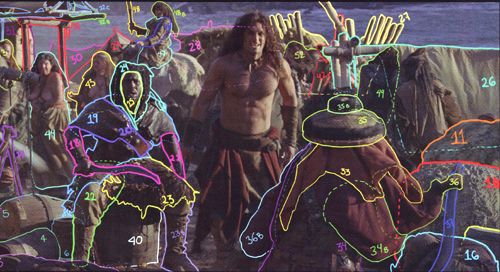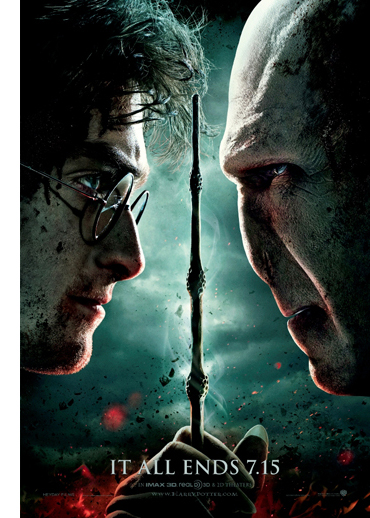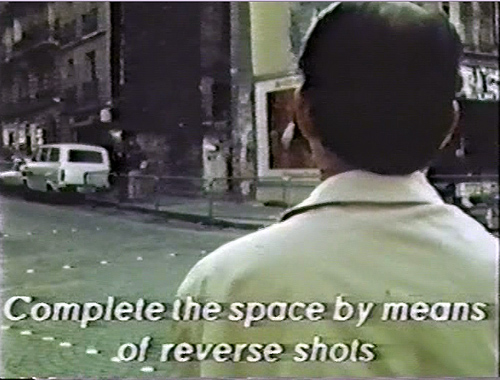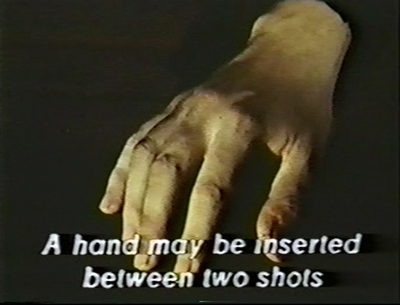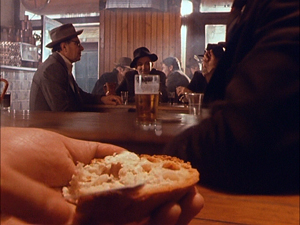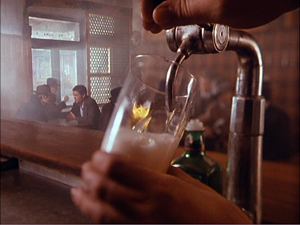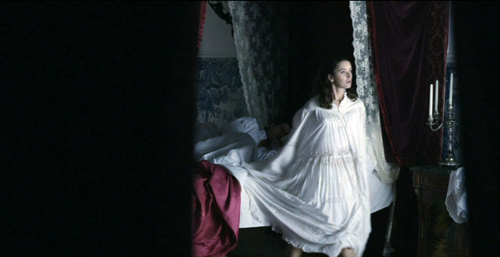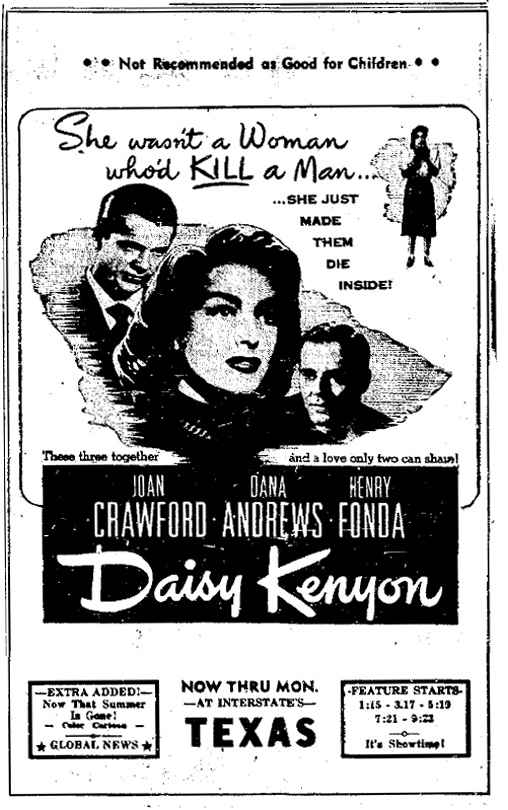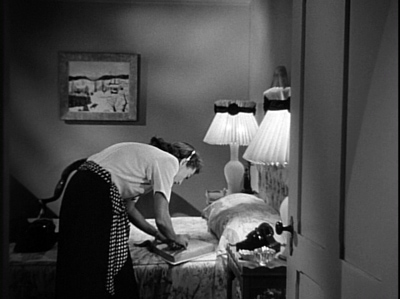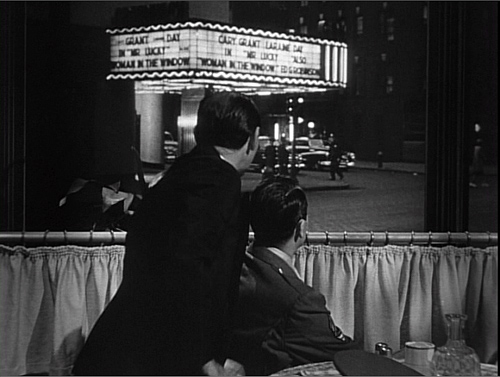Archive for August 2011
As the summer winds down, is 3D doing the same?
Something to do with 2D to 3D conversion for Conan the Barbarian. (See 3DLiveFlix)
Kristin here:
Just over a month ago I posted “Do not forget to return your 3D glasses,” an entry suggesting that on average theatres were making less money from 3D versions of films than 2D versions. I made two basic points. First, claims that films were making, say, 60% or 45% of their box-office gross from 3D showings were inaccurate. Only the extra fee charged at 3D screenings was for 3D; the rest was for the film as such. By that logic, something closer to around 10% was actually being earned by 3D (assuming people who went to see a film in 3D would probably see it in 2D if necessary.)
Second, my point was that if a film’s box-office percentage from 3D screenings was lower than the percentage of theaters in which it was being shown in 3D, then the exhibitors in those theaters were making less money than exhibitors showing the film in 2D. For most films that have come out this summer, starting in May, the percentage has been distinctly lower.
Wasn’t this supposed to be the summer of 3D?
With the summer movie season drawing to a close, I thought I would summarize some recent developments. These tend to suggest that the decline in the popularity of 3D in the U.S. market has continued. Indeed, a recognition of that decline has started to have an impact on the effort within the industry to pressure theaters into showing films in 3D.
During August I noticed for the first time that trade-paper and online sources are becoming more explicit about saying that 3D is no longer as big a draw as it used to be. Reporting on August 13, the day after the release of Final Destination 5, Variety stated, “Though roughly 89% of its screens are in 3D, and 217 are in Imax, ‘Destination’ isn’t expected to see much of a boost from the format given waning interest in 3D. Optimistic B.O. pundits have the film topping out at $21 million through Sunday.”
In fact, Final Destination 5 grossed over $24 million. That was, however, the lowest opening-weekend gross of the franchise. It made about 75% of its gross from 3D screenings, which occupied 80% of locations. That’s better than most 3D films of the summer in proportion of income to screens, but still not great. Its comparatively good performance in 3D suggests that genres like horror still tend to draw the spectators most interested in 3D. Final Destination 5 came in third after two non-3D films, Rise of the Planet of the Apes and The Help, both of which did much better than expected.
The weekend’s other 3D film, Glee the 3D Concert Movie, did so badly that the trades didn’t bother to report its percentages of 3D screens in proportion to income. Its box-office gross put it at #11 on the chart, earning less than $3000 per screen.
The following weekend, August 19-21, saw Rise of the Planet of the Apes and The Help switch slots on the chart, with The Help becoming the first film since January to rise from a #2 opening to the #1 rank—a position it held this past weekend as well, experiencing a low 28% drop despite East Coast theatre closings due to the hurricane.
That same weekend saw three 3D films do lackluster business. Of those, Spy Kids: All the Time in the World did the best, coming in at number 3. About 44% of its income came from 3D, which fits into the 45% level typical of 3D films this summer. Interestingly, though, only 41% of the locations where the film was shown had it in 3D. Variety’s report on Saturday remarked, “The summer’s new norm is to make about 45% of grosses off 3D screens, though that figure could be even lower this weekend with so many pics vying for 3D play and so many of ‘Spy Kids’ engagements opting for 2D.”
There are two implications here. First, if fewer theaters show a film in 3D, the ones that do will make more money, since those moviegoers interested in seeing a film in 3D will converge on that smaller number of theaters. There apparently are not enough such moviegoers to justify having 60% or more of theaters showing 3D. Second, given that four 3D films were debuting that same weekend, theater owners opted to show the film aimed at young children in 2D. We know that there have been complaints that children don’t like wearing the glasses and that parents don’t like shelling out extra fees to take a whole family to a 3D screening. The strategy worked, which again suggests that genres aimed at teenagers might provide the home for 3D, if it survives long-term.
Don’t worry, that includes the whole family. (Just kidding! It’s actually a ticket to last year’s “OnHollywood” trade summit, where 3D was discussed.)
But the teenage-targeting assumption didn’t work out well for the two other 3D debuts of that weekend. Conan the Barbarian showed in 3D in 71% of its locations, but only 61% of its gross came from those locations. The figures were almost identical for Fright Night. Perhaps the two films split the teenage audience, to the detriment of both. Glee fell off 69.4% in its second weekend, to an average of less than $1000 per screen.
The weekend of August 19-21 saw six 3D films in the top 11. (I list 11 rather than 10 because the 11th was the summer’s most successful film and a 3D item, Harry Potter and the Deathly Hallows Part 2.) The 11 were, in order (3D films in bold): The Help; The Rise of the Planet of the Apes; Spy Kids: All the Time in the World; Conan the Barbarian; The Smurfs; Fright Night; Final Destination 5; 30 Minutes or Less; One Day; Crazy, Stupid, Love; and Harry Potter. Of those six films, only two, Harry Potter and The Smurfs, made it to number one—for only one week each, remarkably.
Still doing well abroad
The big Hollywood studios continue to defend 3D as a financial strategy, since films made with the process continue to clean up in most foreign territories. Even though the percentage of 3D box-office income has fallen to a fairly consistent 45% (apart from the occasional genre film), it still provides about 60-70% of the international gross. (Unfortunately percentages of theaters showing 3D films aren’t given in such reports.)
Variety’s Andrew Stewart helps explain how some foreign markets encourage 3D viewing:
To some degree, the divergence can be chalked up to a matter of preference — some cultures just like 3D more than others for reasons that can’t be quantified, and big-budget f/x spectacles continue to draw big auds overseas — but there are also some subtle differences in local pricing models that provide insight to studios and exhibitors eager to see 3D pay off on its promise of enhanced B.O. takings.
Some notable factors: Many international markets temper 3D upcharges with discount play periods. China has half-price Tuesdays. In Germany, “Cinema Day” brings a steep midweek price drop to matinees. And some territories even charge less for 3D pics that have shorter running times. In many countries, premium ticket prices for 3D are further mitigated because moviegoers are encouraged to buy their own reusable glasses.
[…]
Some Japanese exhibs ease 3D ticket prices by charging less to those who bring their own glasses. Dolby controls most of the Japanese 3D market, and in March, the company started offering reusable 3D glasses for $12 per pair. In Europe, RealD sells its reusable glasses at concession stands or the ticket window for about E1, saving auds the repeated expense.
But if theaters attract customers by giving discounts or waiving fees for those who bring their own glasses, how long can the high proportionate income from 3D hold up? Sales of glasses benefit the technology companies, not the theater or studios, and eventually the market will be largely saturated.
So far 3D is holding up well in most foreign markets, but there is one exception. In Spain, where the 3D premium averages a whopping 37%, Transformers earned 49% of its national gross from 3D, Pirates of the Caribbean 41%, and The Smurfs 39%. Variety blames the sag on 22% unemployment and “rampant piracy.” But unemployment and piracy aren’t unique to Spain by any means.
And foreign markets got into 3D exhibition a bit later than North America did. There’s nothing to say that ticket premiums and the decline in the novelty value of 3D won’t start affecting international exhibition eventually.
A certain lack of confidence
The August 12 edition of The Hollywood Reporter revealed that RealD’s “stock has plunged 60 percent since reaching a 52-week high in June as U.S. audiences seem to tire of the format.” Now that’s serious. Two weeks later, in the August 26 edition, a smiling Michael Lewis, the firm’s CEO (below), was given a two-page spread with an interview where he explained why he thought Wall Street was overreacting. (These references are to the print edition; online they’re behind a pay wall.)
Clearly, it was an overreaction. We had record earnings. We’re a relatively new company, and as time goes on we’ll prove the model. It doesn’t really matter if a film does 40 percent or 50 percent; we just believe this is a transformative event like the Internet and the personal computer. All visual displays are going to get better, and we’re really well positioned. Over time, Wall Street will figure that out.
That’s a remarkable claim. Many of us might say, “I don’t know how I got along before computers” or “before the Internet.” How many people would really say “I can’t imagine what we did before 3D came along”? This is hardly a transformative event on a scale even vaguely close to those two technologies. I can easily get along without seeing a film in 3D, but I would never go back to an era when endnotes didn’t rearrange themselves automatically  when you moved or added a reference in your text. Think, too, how profoundly computers and Internet have affected the world financially, and then compare that with the impact of 3D.
when you moved or added a reference in your text. Think, too, how profoundly computers and Internet have affected the world financially, and then compare that with the impact of 3D.
Lewis also seems disingenuous when he claims that whether a film does 40% or 50% of its business in 3D “doesn’t really matter.” It certainly matters to the local multiplex owner who sees more people going into an auditorium showing a movie in 2D than another auditorium showing it in 3D. It matters to the distributor who gets a cut of the take and to the studio that gets the remainder–and had to pay extra to begin with to make the film in 3D.
He may be right, though, that Wall Street overreacted. The interview includes some impressive figures. RealD controls roughly 85% market share of the domestic 3D box office. (Apart from selling its projection systems, special screens, and glasses to theaters, RealD gets a licensing fee averaging fifty cents for every ticket sold.) Within the U.S., it has 10,300 screens in 2,500 locations; abroad, the number is 7,200 screens in 2,300 locations. The firm’s 2011 fiscal-year revenue was $246.1 million, up 64% from the previous year. Its fiscal-year 2011 gross profit was $67.7 million, up 633%. This is flashy–though such growth came during the post-Avatar era when theaters which had missed out on the film’s bonanza were buying 3D equipment at a good clip, and more 3D films were in the pipeline. (Lewis says 2011 will see forty 3D films released.) If theater conversion is nearing saturation point and 2D screenings are outdrawing 3D ones, though, this summer may mark the end of the expansion for companies like RealD.
Lewis doesn’t exactly win me over either with his notions of what to do with 3D. He’d like to convert Singin’ in the Rain into 3D. That and The Love Bug. You know, the great classics. Plus he has a rather peculiar idea of Avatar‘s place in film history. Asked what Cameron’s film did for the business of 3D, Lewis responded: “It legitimized it. It was the Citizen Kane of our medium. After Avatar, I finally didn’t have to go into a meeting and explain why this was going to be important for our industry. The numbers spoke for themselves.” No doubt Avatar‘s phenomenal box-office success made exhibitors who had not yet installed 3D equipment keen to do so. But Kane was in fact not a financially successful film. No one could say of it, “After Kane, I didn’t have to go into a meeting and explain why deep focus was going to be important for our industry. The numbers spoke for themselves.” Both films are undoubtedly historically important, but there’s really very little comparable about them.
Auteurs to the rescue?
Speaking of legitimacy, Lewis is looking forward to the releases of Martin Scorsese’s Hugo in November and Ridley Scott’s Prometheus next year. On August 12, the Wall Street Journal ran a long story by Michelle Kung on how a trio of Movie Brats are about to reveal their first 3D films. Hugo is scheduled for November 23, Steven Spielberg’s The Adventures of Tintin for December 23, and Francis Ford Coppola’s Twixt premieres in September at the Toronto Film Festival.
Spielberg’s popularity among a broad range of audiences remains intact, though whether Belgian import Tintin can win American spectators’ hearts remains to be seen. Whether Scorsese and Coppola, beloved of audiences of my generation, will prove the final boost that 3D needs is up for grabs. Coppola seems a particularly unlikely auteur to pin one’s hopes on. Twixt, a low-budget horror film, has only five minutes of 3D footage, and it has yet to find an American distributor. According to Anne Thompson’s blog, the director “first showed the film to distributors in Los Angeles Wednesday night [i.e., August 24]. Unless he gets a rich offer, Coppola will likely four-wall the film himself; he’s looking to sell video rights.” Today’s Variety reports that Pathé has picked up Twixt for “international sales and distribution in France.” That doesn’t seem to settle the question of a U.S. release.
A more likely shot in the arm for 3D would seem to be Peter Jackson’s Hobbit film, being shot even as I type. It should appeal to teenage 3D buffs and just about everyone else. But the first part is not due out until December, 2012. I suspect that the degree to which 3D will penetrate the theatrical market will be known by then.
The article quotes Jeffrey Katzenberg, who years ago claimed that every screen would eventually be converted to 3D, as saying “You now have some of the greatest filmmakers in the world stepping into the format to tell their stories.” Scorsese has gamely stepped up to the plate, commenting that if 3D had been around when he made Mean Streets or Taxi Driver or Raging Bull, “those stories would have fit in perfectly in 3-D.” It’s a bizarre thought, but maybe he’s serious.
Kung provides some interesting figures. It’s difficult to get a sense of how many people are opting to see 3D films in their 2D versions. Usually the comparison is made in terms of box-office gross rather than number of tickets. But the author says that 57% of people who saw the final Harry Potter film this summer opted for 2D, which seems a pretty significant figure. She also notes the falling stocks of RealD and other 3D firms:
“Consumers are pushing back,” says Richard Greenfield, an analyst at brokerage firm BTIG. “They’re tired of 3-D, both from a price perspective and from a physical-comfort perspective.” He adds that consumers have come to a key realization: A bad film in 3-D is still a bad film.”
Kung says that about 30 new 3D films are due for release next year. If Lewis’ figure of 40 for 2011 is accurate, that means a notable drop in planned 3D productions for the short term. Possibly it’s a temporary one, but perhaps studios are beginning to think that the extra returns from their share of those ticket premiums aren’t worth the cost and effort. If 57% of Harry Potter‘s audience opted for 2D, then perhaps an increasing number of theater owners are refusing to book 3D films from the distributors.
That figure of 30 releases doesn’t include the announced 3D conversions of Titanic and the Star Wars series, which may or may not be ready for release next year. The rumors of such conversions for these and other popular items like the Lord of the Rings film have been circulating, but precious little information on how, when, and where these will eventually reach theaters has been forthcoming.
As I’ve said in my previous posts on 3D, I don’t see any reason why the format would necessarily disappear. Once the match of number of 3D screens and number of moviegoers who want to see 3D movies reaches a reasonable balance–which at this point seems to mean a significant number of current 3D screens reverting to 2D–both formats will make money and 3D will continue, especially for blockbusters and teenage-oriented genre films. But the idea that studio and company executives can simply dictate that the entire public should embrace what is, after all, a relatively superficial technology added onto an already stable and successful product seems overweening and implausible. This summer’s movies have seemingly reflected the public’s more realistic attitude.
And now, enough of 3D. Unless something dramatic happens between now and when Hugo comes out, I shall hold off writing on the subject until we see what happens during the holiday season, when the format faces its next big test.
P.S. August 31: The Fandor blog has a post by Alejandro Adams, a filmmaker who manages a multiplex in northern California. He reports that until recently, studios demanded that all 3D films be shown only in 3D, no matter how many screens were available. Adams reports that this summer: “We’d just opened Captain America ‘over/under,’ meaning that we were offering two 2D shows and three 3D shows in a single auditorium. This was the first time any studio had allowed us to restrict the number of 3D shows. When I checked the grosses after opening day, I was alarmed. We sold twice as many tickets for 2D as 3D. As we’d never booked a 2D engagement of any film available in 3D, I’d never seen this disparity up close. The fact that we were permitted to over/under Captain America in 3D and 2D is itself a distressing development—are the studios suddenly willing to admit they didn’t hit the jackpot with the 3D craze? Are they going to start phasing out 3D so soon after we went to the trouble and expense of making our projectors and screens compliant with their demands?”
Adams calls this a “distressing development,” being a fan of 3D, both for his own and his children’s enjoyment. If my hunch turns out to be correct, they will still have the 3D option, but others will have access to 2D screenings.
RealD’s Michael Lewis. Hmm, those glasses do look a bit clunky. (Photo by Peden + Munk)
Ruiz in memoriam: Rules and ruses
Of Great Events and Ordinary People.
DB here:
Last week, Raúl Ruiz died. His death is an enormous loss to world film culture, not least because his penultimate work, Mysteries of Lisbon, brought him a prominence he had been denied throughout his forty-year career. More important, we lost a modest, kindly, and zestful man.
From the mid-1960s through 1975, it seems to me, there emerged an interesting in-between group of filmmakers. By then film festivals had canonized an official art cinema typified by Fellini, Bergman, Wajda, and the New Wave. Now there appeared a more capricious clutch of directors, of varying ages, who pushed in a more avant-garde direction. Many made outstanding short films, like Wenders’ Same Player Shoots Again, or the Straub/ Huillet Not Reconciled, or Akerman’s Hotel Monterey, or the peculiar early efforts of Peter Greenaway.
When they turned to features, this group of directors produced films like October à Madrid (Marcel Hanoun), The Chronicle of Anna Magdalena Bach (Straub/ Huillet), Fata Morgana (Herzog), Katzelmacher (Fassbinder), and Jeanne Dielmann (Chantal Akerman)—more rigorous and forbidding than anything attempted by the older generation. In later years some of these talents moved comfortably into the festival niches vacated by senior directors, but for many years most were little known outside a small circle.
If they were marginal to most moviegoers, Ruiz was marginal to them. Exiled from Chile, where he made his first features in his twenties, he moved to France in 1973. There he proceeded to direct over a hundred films, often financed by television, while staging plays and running the Maison de la Culture in Le Havre.
His films’ repute was in inverse proportion to their availability. He was celebrated by critics in France (Cahiers du cinéma took up his cause) and England (particularly by London’s Afterimage group). Ruiz had his fans in North America too, notably Jim Hoberman and David Ehrenstein. But the films were chiefly seen at festivals, and none of his productions of this period, so far as I can tell, found stable distribution, theatrical or nontheatrical, in the United States. In 1989-1990, while Ruiz was teaching at Harvard, a batch of his films was circulated here by the quixotic International Film Circuit.
What set him apart from the other marginals was a devotion to esoterica (philosophical, literary, ecclesiastical), pursued with a sly humor. He remarked that during one screening, he was the only person laughing at his movie. Although like most of his contemporaries his sympathies lay on the left, he didn’t seem to take himself seriously, and this put him at a disadvantage in 1970s-1980s world film culture. True, Herzog had a comic side, and in The Falls Greenaway offered whimsy, though of a relentless, almost oppressive variety. Most other directors, though, were somber as well as severe. But Ruiz enjoyed intellectual lampoon, pastiche, clever cross-references, and straight-faced absurdity; the Chris Marker of Letter from Siberia (1957) is perhaps a predecessor, though Marker himself didn’t escape Ruizian parody.
Ruses
Of Great Events and Ordinary People.
Having seen about ten percent of the Ruiz oeuvre, and a lot of it quite long ago, I can’t offer a comprehensive appraisal. (Visit the bottom of the page for some more assured threads through the maze.) For reasons that will be understandable to regular readers of this page, however, I feel obliged to write something in his memory. I merely offer some observations on aspects of his work.
Ruiz often based a film on a striking formal premise, what Henry James might call a donnée. Socialist Realism (Considered as One of the Fine Arts) (1973) began, Ruiz tells us, from the idea of
having two stories that would never meet (like in Faulkner’s Wild Palms), separated by a poem. The link would be made through this lyrical element placed at the centre – the element I eventually decided to throw out. These two stories would touch each other for a single moment, accidentally, and this moment would be secondary in relation to the totality of the film.
Imagine another sort of intersection: two films in one, not a film-within-a-film but two distinct movies, one incomplete, the other filling the gaps but revising and correcting the first (The Suspended Vocation, 1977). Or imagine making an art-history documentary that speculates on the possibility of a missing link in the output of an imaginary, mediocre artist (The Hypothesis of the Stolen Painting, 1979). How about dismantling the conventions of TV election coverage, to the point where one can no longer discern what candidate won (Of Great Events and Ordinary People, 1979)? Or what if a man assigned to memorize the names of 15,000 political resisters becomes absorbed in recalling visiting a movie house as a child (Life Is a Dream, 1986)? Or perhaps a single actor could play different characters (Three Lives and Only One Death, 1996)?
In their working out, however, these givens often fret and fall away. They are overtaken, or nowadays we might say overwritten, by digressions, anecdotes, accidents, interruptions, abstruse commentary, coincidences, free associations, labyrinthine plot twists (often driven by conspiracies and secret pacts), and Surrealist juxtapositions. The movie house of Life Is a Dream has a toy train running through it. Ruiz’s affinities with Borges and Góngora and Chesterton point to an almost academic fascination with schematic systems, as well as the desire to push them toward absurdity. It’s telling that the poem that was to knot the two strands of Socialist Realism was clipped from the movie.
Narrative binds, but narrative also loosens. It can be a robust oak, but it can also be kudzu. Ruiz understood that what keeps us listening, reading, watching is the promise of a surprise that in retrospect will seem inevitable. The best tragic plot, Aristotle says, is one that makes unexpected things happen within a cogent chain of causality. Ruiz knew our inclinations, but what he gave us were plots of the sort that Aristotle calls episodic–perhaps we should say fragmentary. His plots exfoliate, in both senses of the word: they spread out from a kernel, and they peel off in flakes.
In this respect he turns out to be the realist, and Aristotle the fabulist. Ruiz understood that real-world stories breed like rabbits. Listen to yourself and a friend in conversation, and you’ll find one story calling up another, with yet a third crowding from at a tangent before the first one is finished. In plotting our fictions, we can multiply tales neatly, staking them out in parallel lines or coiling them inside Chinese boxes. But if we take the pressure off, the stories can burst out of control, intertwining or doubling back or sprawling out or just dying off. Feuillade and his contemporaries understood this: A serial could go on forever, because we could plop in a fresh character and create a further adventure. The same thing happens with news on the Internet, spreading and splintering, each version of a story torn apart but also expanded by rehash and critique.
Perhaps we can take some of Ruiz’s abrupt deep-focus shots, blowing up an action or a bit of the set that would otherwise be minor background detail, as a pictorial reminder of the centrifugal impulse of narrative. Anything looming in the foreground hints at the possibility of a new character with a new story. In Three Crowns of the Sailor, while the sailor listens to a tale told by the Blind Man, we are distracted by grotesque glimpses of what unseen others are up to in the bar.
Stories have to end, but nothing at the end can match the arousal of a beginning. Endings usually disappoint. The explanation of an puzzling situation–say, footprints on the ceiling–will inevitably be more prosaic than the premise that sets our imaginations on a wanton chase. (Hence the perfunctory, even arbitrary, resolutions of detective stories.) By contrast, openings refresh us and, as the name implies, “open” things up to crazy possibilities. So why not use the prospect of endless beginnings, perpetual change of situation, to sustain the magic?
What becomes inevitable isn’t a logical resolution, which has to be more or less imposed by tradition. What’s inevitable is a perpetual spawning of characters, plots, and situations. So an apparently stable, albeit fantastic, narrative situation posited at the start may be undermined. Again and again the film seems to start over; the rules keep changing. Ruiz made shaggy-dog stories for cinephiles. He was a formalist who liked unraveling forms.
On the whole I was more an admirer than an enthusiast. I thought Ruiz’s films were imaginative and risky in ways that opened up new horizons. I tried to do justice to his importance in the survey of film history that Kristin and I composed.
Yet here we confront the difference between critical judgment and personal taste. I tended to find each Ruiz film intriguing on an intellectual level, but dry and scattershot as well. For all the prodigious invention, and given his bias toward free-range story breeding, I sometimes thought that the données were underdeveloped. He had wondrous ideas, but I wasn’t sure that he did enough with them. And of course some stretches of his yarns were downright opaque to me.
Still, artists have a way of teaching us how to watch, and rewatch, their work. Maybe now, after having been absorbed by Mysteries of Lisbon for reasons sketched here, I’m better prepared to appreciate the legacy of a unique sensibility–one that has already given us the adjective Ruizian. It is a term of praise.
No filmmaker had more zealous proselytizers. His admirers have shown how to blend analytical precision with brio. They make you want to see the films pronto. The Ruiz initiate can start with Adrian Martin’s homage at girish’s site. You won’t read a more sensitive piece of film criticism this year. Next savor James Schamus’ memoir at Filmmaker, where he recalls working with Ruiz on his first US film. Proceed to Jonathan Rosenbaum’s posting of one of his classic studies of Ruiz, which includes links to other essays.
Now you’re ready for the heady experience of the annotated filmography (complete up to 2004) in the journal Rouge. Both Adrian and Jonathan participated. My quotation about Socialist Realism comes from there. By now you should be on to the films, and perhaps the writings collected in volumes one and two of Ruiz’s Poetics of Cinema.
By chance I commented on Ruiz just a little while ago. And thanks to B. Kite for the note about Ruiz and Harry Stephen Keeler, obviously kindred spirits. Mr. Kite sent Ruiz some Keeleriana, which may have influenced what Ruiz says here.
Apologies for my tongue-twisting title, which is offered in the spirit of Tres Tristes Tigres.
Mysteries of Lisbon.
Is there a blog in this class? 2011
Kristin here:
The 2011/12 school year is staring us in the face, and that means it’s time for another summary of which recent blog entries might be useful for teachers who assign Film Art: An Introduction in their classes. We’ve amassed 443 posts since we launched Observations on Film Art in late September, 2006, so browsing through them might seem a daunting prospect. You can also consult previous entries in this annual series for 2007, 2008, 2009, and 2010.
Chapter by chapter
Chapter 3 Narrative as a Formal System
Launching from an anecdote about a three-year-old watching Snow White and the Seven Dwarfs, we speculate about the conventions of narrative closure and how we learn them in “Molly wanted more.”
 In discussing narration, we describe one of its characteristics as the “range of knowledge” the spectator is given. Often we’re limited largely to finding out what one character knows, as with Philip Marlowe in The Big Sleep. We examine this idea in more detail in “Alignment, allegiance, and murder.”
In discussing narration, we describe one of its characteristics as the “range of knowledge” the spectator is given. Often we’re limited largely to finding out what one character knows, as with Philip Marlowe in The Big Sleep. We examine this idea in more detail in “Alignment, allegiance, and murder.”
Chapter 3 has a “Closer Look” box that talks about the recent vogue for narratives that play games with time and causality, including the forking-path story. We examine another example in “Forking tracks: Source Code.”
We also discuss parallel plots, which in some cases involve protagonists who never meet. “Julie, Julia, & the house that talked” offers two examples, Julie & Julia and Enchantment.
Our main example in this chapter is Citizen Kane, which helped popularize flashback-based narratives in the 1940s. Some less familiar but equally baroque examples feature in “Chinese boxes, Russian dolls, and Hollywood movies.”
And for more on flashbacks in movies new and old, see “Puppetry and ventriloquism.”
Chapter 4 The Shot: Mise-en-Scene
Louis Feuillade’s silent French serials of the mid-1910s are masterpieces of subtle staging in depth. David analyses the wonderful serial Fantômas in “How to watch Fantômas and why.”
Students are especially keen to talk about acting, but it’s one of the hardest aspects of film to pin down and discuss. The chapter deals with it alongside the three other aspects of mise-en-scene, make-up/costumes, lighting, and setting. For those who want to teach it in more detail, we provide a discussion of the acting in The Social Network, concentrating (as filmmakers tend to) on the eyes and eyebrows of the two main actors. See “The Social Network: Faces behind Facebook.”
Chapter 5 The Shot: Cinematography
We discuss the most common screen ratios (the height of an image compared to its width) in this chapter. Some films have been released in two different ratios, widescreen and Academy. We demonstrate how important  small differences in framing can be in Fritz Lang’s films in “Ratio-cination.” By contrast, “A Matter of ‘Scope” considers how Japanese and Chinese filmmakers use the 2.35 ratio.
small differences in framing can be in Fritz Lang’s films in “Ratio-cination.” By contrast, “A Matter of ‘Scope” considers how Japanese and Chinese filmmakers use the 2.35 ratio.
The use of 3D has expanded considerably since we revised Film Art for its current edition, the ninth. Whether the technique will continue to expand or will simply be used for blockbusters and inexpensive genre films is still a subject for debate. We have followed the debates and the box-office fortunes of 3D in three entries this year: “Has 3D already failed? The sequel, part 1: RealDlighted,” “Has 3D already failed? The sequel, part 2: RealDsgusted,” and “Do not forget to return your 3D glasses.”
Chapter 6 The Relation of Shot to Shot: Editing
After noticing some incorrect definitions of “graphic match” appearing in print and on the internet (including Wikipedia), we decided to clarify the matter. We devised the term “graphic match” back in the mid-1970s, so we try to explain it in “Graphic content ahead.”
Chapter 8 Style as a Formal System
In “Bond vs. Chan: Jackie shows how it’s done,” we talk about how staging, framing, and editing can be used to make a clear, understandable fight scene (Jackie Chan) or a clumsy one where half the action isn’t there on the screen (Tomorrow Never Dies).
For more on clarity in staging, framing, and editing, see our comparison of Shanghai and Tampopo, “Direction: come in and sit down.”
Wouldn’t you know it? Our most popular entry ever was written by a guest blogger! Tim Smith, who researches how our eyes and minds perceive films, contributed “Watching you watching There Will Be Blood.” He was following up on an earlier entry by David, “Hands and faces across the table,” which analyzed a lengthy take in There Will Be Blood, suggesting how the staging and gestures direct our attention from one point on the screen to another. Tim followed up by using eye-tracking devices to show precisely where eleven viewers were looking from instant to instant. The entry included a video clip of the scene with the eye movements shown with moving circles.
This entry was posted in February and has racked up hundreds of thousands of views, on our site and others. About a hundred people still click on our entry every day. It even helped inspire a story in the New York Times by Manohla Dargis.
 Tim’s post was less directly a follow-up to one we wrote on how eyes move across paintings: “The eye’s mind.”
Tim’s post was less directly a follow-up to one we wrote on how eyes move across paintings: “The eye’s mind.”
The rediscovery of the great early silent French director Albert Capellani doesn’t exactly fit into Film Art, but we think everyone should be aware of this important figure. “Capellani trionfante” outlines the basics of his distinctive style. Greater than Griffith? For the pre-World War I period, at least, we think he may be.
Mainstream movies are more fast-paced than ever these days. We celebrate the merits of films with a slower rhythm in “Good and good for you.” Perhaps adventurous students will be intrigued.
Chapter 10 Documentary, Experimental, and Animated Films
Documentarist Errol Morris is an alumnus of the University of Wisconsin-Madison, and this past year he visited for a few days, bringing his new film Tabloid with him. We profile him in “Errol Morris, boy detective.” This entry could be assigned along with the analysis of The Thin Blue Line in Chapter 11.
We were blogging from New York in February, when Christian Marclay’s The Clock was creating a sensation at a downtown gallery. It’s a 24-hour compilation video made up of shots from a huge variety of existing films, all showing clocks that register the time at which the viewer is seeing those shots. We discuss it in “Time piece.”
Animation sometimes turns up in unexpected places. The makers of Harry Potter and the Deathly Hallows Part 1 decided to render the story Hermione Granger reads from The Tales of Beadle the Bard as a short animated film. We discuss this imaginative segment and its director in “Three minutes of ‘Three Brothers.’”
Chapter 12 Film Art and Film History
Film history is a living presence on our blog: We talk about cinema from the silent era onward. So great is our commitment to early film that we don’t post a list of the ten best films of the year. Instead we decided to promote old films by discussing the ten best films of exactly ninety years ago. This time it was “The ten best films of … 1920.” If you teach a unit on film history, this entry and its predecessors might give you some ideas about what to show in class. The most recent one contains links to all the earlier entries. Some titles will be familiar, some less so, and some, alas, are still awaiting release on DVD.
One section of Chapter 12 deals with the development of Hollywood continuity style in the 1910s. We go into more detail concerning editing and staging during this period in “Looking different today?”
Anyone interested in going beyond Chapter 12’s section on Hong Kong film history will find plenty more information in this year’s entries. To celebrate the second edition of David’s Planet Hong Kong: Popular Cinema and the Art of Entertainment, available here, there is a seven-day blogathon about stars, stories, and styles in Hong Kong cinema. That week starts here, with a list of 25 essential movies. There’s also David’s annual report from the Hong Kong International Film Festival, launching, appropriately enough, with an entry called “Bullets from the East.”
The last section of the chapter deals with modern Hollywood cinema. Our review of Sidney Lumet’s career deals with changes in mainstream moviemaking that occurred from the 1950s on, in “Endurance: Survival lessons from Lumet.”
More generally
About once a year we post an entry in our series, “Beyond praise: DVD supplements that really tell you something.” These offer suggestions for supplements that offer substantive information on filmmaking. Our fourth “Beyond praise” post, with links to the first three, is here.
We attend a small number of film festivals regularly and blog about the movies we see there. We’re not linking to every one of our festival reports, but they do contain brief commentaries on recent films and restorations of older ones. Teachers who happen to be screening one of these films might find what we say useful. There are links for festivals in general and specific festivals in the Categories list in the right margin, or try typing specific titles into the search box. We also have added a lot of new categories, including individual filmmakers and festivals.
When we started our blog, we didn’t expect that it would provide the contents for a book. Still, when the University of Chicago Press suggested that we propose a collection bringing together some of our popular entries, we thought it worth a try. The result was published this year as Minding Movies: Observations on the Art, Craft, and Business of Filmmaking. Naturally, in a case of circular synergy, we blogged about it in “A new book, more or less accidental.”
Real products (I think).
Despoiling the movies
The Denton Record-Chronicle (28 December 1947).
DB here:
The last line of Otto Preminger’s Daisy Kenyon is “When it comes to modern combat tactics, you’re both babies compared to me.” If you haven’t seen the film, does knowing that ruin it for you? Suppose I went further and identified the character who spoke the line, or the immediate circumstances, or the action leading up to it? Would knowing these things ruin your pleasure? Or would it give you a different sort of pleasure?
Who doesn’t come to Casablanca knowing about “Here’s looking at you, kid,” or “Play it, Sam,” or “Round up the usual suspects”? You likely saw the ending of King Kong in compilation films before you saw the whole movie, yet you probably still watch it with enjoyment. I saw Potemkin’s Odessa Steps sequence many times, on an 8mm reel I bought as a kid, before I saw the whole movie. I still enjoy Potemkin, possibly more than many who see it for the first time. Yet people complain about trailers that tell too much, and critics who give plot twists away. Accordingly, it’s been a convention of fan and Net writing that if you’re going to give away major story information, you alert readers with the word “spoiler.”
Surely people want to know something about a film’s story. Viewers clamored for the most basic information about Super 8. And evidently many moviegoers would feel less disgruntled about The Tree of Life if they had known in advance a little bit more about what they would encounter. It seems we want to know about the story’s basic situation, but not too much about how things develop. Say: bits from the first half-hour or so, up to the beginning of the Second Act (or what Kristin calls the Complicating Action). Beyond that, we want things kept quiet. Above all: Don’t tell the how things turn out in the end.
I’ve been driven to think again about spoilers after Jonah Lehrer reported on an experiment with literary texts. On the whole, readers in the study reported enjoying a short story somewhat more if they knew the ending in advance. Jim Emerson has provided his characteristically stimulating commentary on this finding, and his readers, surely among the most reflective in the online film community, have supplemented his thoughts.
This discussion overlaps with a question I raised a while back on this site. How can we feel suspense if we know a story’s outcome? One standard answer, which would apply to spoilers too, is that even with foreknowledge, we’re interested in how that turn of events comes about. This possibility is invoked by some of Jim’s readers, and it seems plausible, especially if one is a connoisseur of storytelling. How, we ask, does the narrative engineer this or that twist?
My further proposal in the blog entry was that our mind’s intake of narratives is modular in some respects. Part of us reacts as if we were encountering the events fresh, without knowledge of what is coming up. The analogy was to standing on a balcony overhanging a precipice. You know that you cannot fall, but when you imagine yourself falling, you feel a twinge of fear all the same.
The same might be true of consuming a narrative. One of our mental systems, fast but fairly dumb, reacts to things as they come, while secure knowledge hovers more distantly in the background. I suggested as well that the way that something is presented–say, with fast cutting or sweeping music–can override our knowledge and kindle a basic, more visceral response.
Today’s entry tackles the matter of foreknowledge from a different angle. It’s worth remembering that many people who went to the movies in the 1920s through the 1950s willingly subjected themselves to spoilers.
This is where we came in?
Chicago Daily Tribune (4 January 1948).
While the American studios developed their storytelling strategies in the 1920s and 1930s, movie exhibition became a big business. In 1935, eighty million Americans went to the movies every week. The historical high point was 1946-1948, when annual attendance hit 4.7 billion. But how did all those people see the movies? More specifically, did they watch them from start to finish?
We’re so used to showing up at a definite time for a screening that it’s hard to imagine a period when many viewers would simply drop in to what were called “continuous admissions” or “continuous performances.” In major cities, the film programs, complete with newsreels, cartoons, trailers, other shorts, and even a second feature, would run steadily with only brief intermissions. You could drop in any time.
When the houses filled up, prospective viewers would have to wait in line outside or in the lobby until someone left. Then an usher would show the next patron to the empty seat. Meyer Levin’s novel The Old Bunch describes a group of friends waiting forty-five minutes before just getting into the lobby of a Chicago theatre in the 1920s.
Some of the viewers would depart during the main or second feature. Naturally, the patrons admitted in medias res would see the end of a movie before they caught up with the beginning, perhaps some hours later. Hence the phrase, “This is where we came in,” meaning, “Now we’ve seen the whole picture and can leave.”
After Kristin, Janet Staiger, and I wrote The Classical Hollywood Cinema, a few readers asked why we hadn’t talked about continuous admissions. The practice would seem to explain a lot about the redundancy of Hollywood storytelling. Hyperexplicit exposition, the Rule of Three (say everything important thrice), and the habit characters have of reminding us of their relations to each other (“Gee! You’re the swellest sister a guy ever had!”)—all this would seem to be aimed at a viewer who might well have come in halfway through and need orienting to basic plot premises.
We knew about continuous performances, of course, but we didn’t discuss them because we could find no evidence that filmmakers took these conditions into account when designing their stories. In reading Hollywood screenplay manuals, technical journals, and the like, I didn’t find anyone commenting on the exhibition practice. My colleague Lea Jacobs, who has scanned Variety very comprehensively for the 1920s and 1930s, can recall no mentions of it affecting production policies.
When you think about it, screenwriters and directors couldn’t really do much to bring a latecomer up to date. You can’t keep reiterating story premises and recapitulating all that went before, and still move the plot forward. Better to tell the story straightforwardly and assume, as a default, that under ideal circumstances people would see the whole film from scene one onward. The same assumption governs TV writing, despite viewers’ channel surfing and foreplay with the remote.
Still, during the Golden Age of Hollywood a significant population consumed movies knowing how the story turned out before they saw the beginning. Ask people of my generation or older, and you’ll usually hear: “Oh, we went whenever we wanted. We never tried to find the showtimes.” My childhood moviegoing memories are dim, but I recall being dropped off at the Elmwood Theatre by my parents when they went to town. I’d go in during the movie (I do recall The Sad Sack, 1957) and watch until my mother or father fetched me out. It’s very likely that adults drifted in at odd times as well.
There’s harder evidence that some people preferred convenience to coherence. In 1950 Twentieth Century-Fox announced that All About Eve (1950) would be screened only in “scheduled performances.” No one would be seated after the film began. Premiering at Manhattan’s Roxy Theatre, Eve ran for a week under the new policy. It failed. People hadn’t heard about the new rules, showed up late, and weren’t admitted. The results were angry lines outside and empty seats within. The practice was halted and Eve screened in continuous performance. The Hollywood Reporter attributed the failure to “the public’s deeply ingrained habit of going to a movie show at any desired hour, when most convenient or on impulse.”
In other words, many people were encountering what we call spoilers all the time, and it didn’t seem to bother them. So you wonder: Is watching a movie straight through, as we mostly do today, a newer, more “disciplined” mode of consumption?
It’s showtime
Daisy Kenyon.
It’s obvious that the custom of just dropping in didn’t guarantee a nonlinear movie experience. With a double-bill house, even if you dropped in arbitrarily, you would see one feature or the other in a single gulp. And assuming a three-hour program and a 90- or 95-minute A picture, your odds of walking in during the shorts or the B film were about fifty-fifty.
But were people obliged to drop in willy-nilly? Could they have seen the movie straight through if they wanted to?
There’s considerable evidence that parts of the audience did want to see the movies in linear fashion.Consider the early attenders. And many cinemas filled up quickly just before the show started. Coming in when the theatre opened seems a fairly clear indication of wanting a linear experience. True, early attenders would probably have to sit through a newsreel, trailers, and other shorts, but many people enjoyed those too. Further, since double-bill houses screened the A picture first, knowing that custom could guide your decision about when to come in.
Could patrons have gained specific information about when the movies were screening? There’s a widespread belief that theatres didn’t publicize showtimes. But that’s not the case.
First, the box office almost always posted a schedule breaking down the program. Sometimes cardboard clocks with movable hands indicated showtimes. Patrons might see the schedule when they arrived, or while passing the theatre during the day. Knowing the schedule, you didn’t have to go straight in. If you bought your ticket while the feature was running, you could linger in the lobby. Probably some viewers were reluctant to enter if the feature they wanted to see was just ending.
Second, there were newspaper advertisements. This evidence is varied and intriguing, full of unexpected quirks. First, I took a look at late 1940s ads for the Elmwood, my hometown venue. These ads are mostly bare-bones. They list the movies, all double features, with three changes a week (films played Friday-Saturday, Sunday-Monday, and Tuesday-Thursday). The theatre doesn’t supply its phone number, probably because many families in our area didn’t have phones until the late 1950s. Showtimes are seldom mentioned. Doubtless townfolks knew by local custom what the showtimes were, and there was no need to advertise it in newspapers or handbills (which were still around in the 1950s). One September 1949 item specifies opening and closing hours:
Matinees Daily 2:00
Evenings 7:00 to 11:30
Sundays and Holidays Continuous 2:00 to 11:30
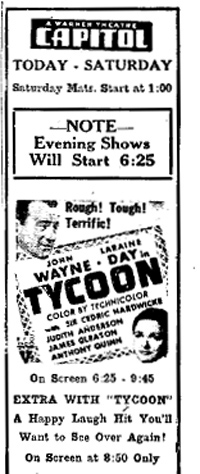 Knowing these hours of operation, people who wanted to see the movies straight through could show up at 2:00 or 7:00.
Knowing these hours of operation, people who wanted to see the movies straight through could show up at 2:00 or 7:00.
But some ads in other towns get a little more specific. “2 COMPLETE SHOWS 9:30 & 12 MIDNITE,” blares the Colonia of Norwich, New York in 1947. This indicates the starting times for the newsreel, cartoon, and ads, which all preceded the main feature. But since many theatres began their screening at 6:00, the accompanying ad from the Capitol, of Dunkirk, New York in 1948 seems to be saying that after all the shorts and ads, Tycoon hits the screen at 6:25. That movie ran a little over two hours, so there was time for filler leading up to the Happy Laugh Hit (presumably a revival). More unequivocal is the ad for Daisy Kenyon at the very top of this entry, which specifies when the feature starts. Again, the theatre probably opened at 1:00 and brought in the evening crowd at 7:00. That left fifteen minutes or so for pre-show material, including the color cartoon and “Global News”.
In short, some newspaper ads tell us only the theatre’s operating hours, while others specify showtimes. This sort of variation goes far back. The Olean (New York) Evening Herald advertised the Strand Theatre as “showing continuously 1 to 11 daily,” with no showtimes mentioned. On the same page we find specific starting times listed for a rival theatre’s showings of Fairbanks’Mark of Zorro (1921).
For special occasions, the scheduling could be quite exact. If you happened to be in Middletown, New York, on New Year’s Eve of 1947, you could welcome in “Kid 1948” at a gala show starting at 7:00 and ending “some time in 1948.” But not just “some time”: The State’s plan has a military precision.
Daisy Kenyon at 7:00 – 9:29 – 12:01
Comedy “Skooper Dooper” at 8:38 – 11:08
Terrytoon Cartoon “Silver Streak” at 9:12 – 11:42
Community Sing at 9:19 – 11:49
Latest Pathe News at 8:56 – 11:26
The ad goes on:
No seats reserved – No waiting in line. Come any time from 6:30 until 11:20 and see a complete show—Stay as long as you like! Come in one year—Leave the next!
The rival Goshen Theatre likewise provided a detailed schedule of its New Year’s Eve attractions, an astonishing four features plus cartoons. The show, broken into 9 “units,” started at 7:00 and ended at 1:00 in the morning, concluding with an “Exit March.” Why don’t movie theatres have exit marches any more?
Apart from ads specifying showtimes, we can glean other hints that at least some viewers preferred to know when to arrive to catch a film from the beginning. Some newspapers published lists of starting times. The New York Evening Post printed an extensive “Movie Clock” covering over eighty theatres. A Schenectady paper did the same thing under the rubric “Showing Today. What the Theatres Are Advertising.” You can find a similar feature in papers from Portland and Council Bluffs. Movie houses were often a small-town newspaper’s biggest and most reliable advertising source, so many editors were ready to oblige theatre managers.
Movie ads also sometimes included the theatre’s phone number, so people could call to check showtimes. Access to telephones was still spotty then; recall that the infamous Gallup Poll of 1948 misjudged Dewey’s chance for victory, partly by relying on phone surveys. But by 1945 there were about 16 million residential phones for a population of 140 million, so the middle-class people sought by exhibitors, then as now, might well be able to call up the movie house.
That is, in fact, what Daisy Kenyon does at one point in her movie. Having decided to go out with her girlfriend, she checks the phone number of the theatre she wants to visit and starts to call to check on showtimes. (She’s interrupted by a call from the mysterious Peter Lapham.) The scene seems to model one set of urban filmgoing habits.
Historian Douglas Gomery reminds us that there were many different sorts of theatres–first-run and subsequent-run, big downtown houses and neighborhood venues, rural ones, art houses, and so on. I’ve tried to capture some of this variety in my exploratory sample, but there are many fine-grained differences. Moreover, roadshow pictures often played to strict schedules, selling tickets for specific performances, and people adjusted their schedules to that regime for Gone with the Wind and other blockbusters. Perhaps the All About Eve fiasco came from people thinking this new film, in black-and-white and offered at regular admission prices, was not an event film like the usual roadshow attraction.
In all, it’s hard to generalize about viewing patterns. But it seems fair to say that in many circumstances viewers could, if they wanted, avoid seeing a movie’s ending before the beginning.
Which means that, then as now, we find different viewing styles. Today we have the Planners, who Tivo their cable television offerings, and the Grazers, who hop from channel to channel and watch in medias res. (We also have the Gleaners, who sample items at their leisure via the net. But there doesn’t seem to be an equivalent option in classic theatrical film viewing.) Several of Jim Emerson’s cinephile readers point out that they appreciate spoiler alerts in a web review because they want the choice between knowing and not knowing. It seems that in many circumstances movie houses offered 1940s viewers that same option.
Exhibition history is far from my specialty, so I’d welcome information from researchers who’ve studied this question more systematically. In the meantime, I’m grateful to Kristin, Ben Brewster, Lea Jacobs, Vance Kepley, Betty Kepley, John Huntington, and Virginia Wright Wexman for discussion with me. A special thanks to Douglas Gomery, who shared detailed information in emails and phone conversations.
For a comprehensive history, see Douglas Gomery, Shared Pleasures: A History of Movie Presentation in the United States (University of Wisconsin Press, 1992). See also Gregory A. Waller, Moviegoing in America: A Sourcebook in the History of Film Exhibition (Wiley-Blackwell, 2001) and Going to the Movies: Hollywood and the Social Experience of Cinema (University of Exeter Press, 2007), ed. Richard Maltby, Melvyn Stokes, and Robert C. Allen. Allen has mounted a beautiful online archive devoted to moviegoing in North Carolina.
A useful older source, though not focused on the 1940s, is Frank H. Ricketson, Jr., The Management of Motion Picture Theatres (McGraw-Hill, 1938). Ricketson advocates three hours as a maximum program time.
The motion picture theatre has a constant drop-in trade, and the patron who catches the feature after it has started does not want to sit through a seemingly endless program to see the part that he has missed. The tendency today is to present shows that are too long (p. 121).
It’s possible that as an employee of Fox Theatres, Ricketson was pushing the then-common industry view that double features were undesirable. Fewer films on the bill allowed more turnover during the day and favored the higher-profit A pictures.
Information about All About Eve‘s “scheduled performance” policy comes from the American Film Institute Catalog. See also “Business on ‘Eve’ at Roxy Jumps After Scheduled Showings Cut,” Boxoffice (28 October 1950), 50, available here. Linda Williams argues that Psycho‘s exhibition policy helped create the custom of consuming a movie straight through. See her “Discipline and Distraction: Psycho, Visual Culture, and Postmodern Cinema,” in “Culture” and the Problem of Disciplines, ed. John Carlos Rowe (Columbia University Press, 1998).
My analogy to standing on a precipice comes from Noël Carroll’s The Philosophy of Horror.
Two final points I couldn’t squeeze in elsewhere. First, to a large extent, spoilers are a function of different sorts of movie talk. In daily conversation, we’re reluctant to tell too much to friends who haven’t yet seen the film. Journalistic film reviewers seek not to reveal the ending, of course, but they’re also obliged to write about many scenes in an oblique way. (“After a string of preposterous coincidences…”) Net writers seem to model their comments on conversation and professional reviews, although some rascals delight in telling innocent readers everything that happens. We might call them spoilersports.
By contrast, academic writing assumes that the reader has seen the film, or is willing to let details be divulged for the sake of some larger point. Occasionally bloggers adhere to this standard. Readers of J. J. Murphy’s blog know that he doesn’t refrain from synposizing a plot to give depth to an analysis. I’ve done the same thing here on many occasions, but sometimes I feel the need to signal spoilers, particularly for current releases or films that depend on big twists. For some reason, I think that older films are fair game for full-blown discussion, even though many of our readers are less likely to have seen Enchantment than Source Code.
Second point, pure digression: In 1947, Richard Hull published Last First, a mystery novel dedicated “to those who habitually read the last chapter first.” The opening chapter does provide the story’s ending, but as you’d expect there’s a trick. The chapter is written so obliquely that you can’t really tell who is doing what to whom. At least I can’t.
P. S. 18 May 2012: Two more items that I’ve run across relevant to the this-is-where-we-came-in problem. First, this dialogue exchange from Ellery Queen’s serial-killer novel of 1949, Cat of Many Tails. The murder victim, one investigator says, “left for a neighborhood movie. Around nine o’clock.” The other asks, “Pretty late?” The reply: “She went just for the main feature.” This suggests that in Manhattan, it wouldn’t be impossible to know when the main feature played for the last time–either from the newspaper, from a phone call, or just from custom.
It seems that indeed late shows of the A picture were common. A 1939 Variety article, “‘Bad’ Scheduling Squawk” (27 December 1939, 5, 47) indicates that often the “No. 1 film” was put on at awkward hours, and viewers objected. “Too often, it is declared, a customer will call the theatre, only to learn the film he or she wants to see goes on at a time that interferes with dinner, or it’s on the last show, so late that getting out would be around midnight or thereabouts. Result, under theory, is that the customer doesn’t go at all.” Again, we find some evidence that the public could find out when a movie played by phoning, and that at least some patrons cared enough to see the picture through from the start. This piece from 1939 suggests that these options were available at least in some towns throughout the 1940s. Presumably, this practice was prominent in theatres not controlled by the studios, since the B picture was a flat-rate rental but the No. 1 feature was a percentage booking. The more tickets you could sell for the B, the bigger the exhibitor’s share of receipts.
P.S. 21 May 2012: The Wisconsin Project never sleeps. Alert Ph. D. researcher Andrea Comiskey sends me 1939 ads from the Olympia in Portsmouth, New Hampshire and the Fox in Billings, Montana. Both lists start times for both features, A and B, with the Fox including the start times for cartoons and newsreels too. The heading is, bluntly, “When to Come Today.” As per the above addendum, the Fox runs the A picture last, and quite late (around 10 PM).
P.P.S. 1 February 2021: Ran across this in John O’Hara’s novel Butterfield 8 (1935):
“What are we up to this afternoon?”
“Oh, whatever you like,” she said.
“I want to see ‘The Public Enemy.'”
“Oh, divine. James Cagney.”
“Oh, you like James Cagney?”
“Adore him.”
“Why?” he said.
“Oh, he’s so attractive. So tough. Why–I just thought of something.”
“What?”
“He’s–I hope you don’t mind this–but he’s a little like you.”
“Uh. Well, I’ll phone and see what time the main picture goes on.”
“Why?”
“Well, I’ve seen it and you haven’t, and I don’t want you to see the ending first.”
“Oh, I don’t mind.”
“I’ll remind you of that after you’ve seen the picture.”
Daisy Kenyon. Daisy and her friend, tracked by Peter and watched by a waiter, have apparently gone to a revival house–and one not playing pictures from Fox, the studio behind Daisy.












